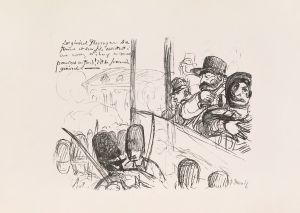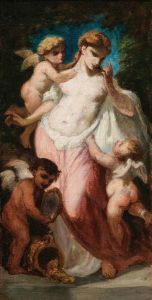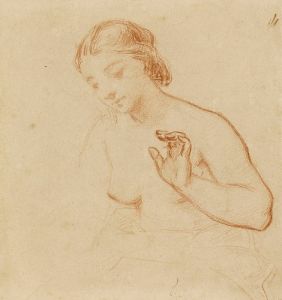
Tête d’homme
A hand-painted replica of Narcisse-Virgile Diaz de La Peña’s masterpiece Tête d’homme, meticulously crafted by professional artists to capture the true essence of the original. Each piece is created with museum-quality canvas and rare mineral pigments, carefully painted by experienced artists with delicate brushstrokes and rich, layered colors to perfectly recreate the texture of the original artwork. Unlike machine-printed reproductions, this hand-painted version brings the painting to life, infused with the artist’s emotions and skill in every stroke. Whether for personal collection or home decoration, it instantly elevates the artistic atmosphere of any space.
Narcisse-Virgile Diaz de la Peña (1807–1876) was a French painter associated with the Barbizon School, a group of artists known for their focus on naturalistic landscapes and scenes of rural life. While Diaz de la Peña is primarily celebrated for his richly colored landscapes and forest scenes, he also produced a number of figure studies and portraits during his career. One such work attributed to him is Tête d’homme (Head of a Man).
Tête d’homme is a study of a male head, showcasing Diaz de la Peña’s skill in capturing human expression and character. The painting demonstrates his adept use of light and shadow, as well as his ability to render texture and detail. The subject is depicted with a focused and introspective expression, and the brushwork suggests a sense of immediacy, as though the artist sought to capture the essence of the individual in a single sitting. The work reflects the influence of Romanticism, a movement that emphasized emotion and individuality, which was prevalent during Diaz de la Peña’s early career.
Although Diaz de la Peña is best known for his landscapes, works like Tête d’homme highlight his versatility as an artist. His figure studies often reveal a sensitivity to the human form and an interest in exploring the nuances of personality and mood. These qualities are evident in Tête d’homme, where the subject’s face is rendered with a combination of precision and painterly freedom.
The exact date of creation for Tête d’homme is not documented, and little is known about the identity of the sitter or the specific context in which the painting was produced. It is possible that the work was created as a study or exercise rather than as a commissioned portrait. Such studies were common among artists of the time, serving as a means to refine their technique and explore different approaches to representation.
As with many works by Diaz de la Peña, Tête d’homme reflects the artist’s mastery of color and texture, even in a relatively simple composition. The painting is an example of his broader artistic output, which ranged from intimate studies of individuals to sweeping depictions of nature. Today, Diaz de la Peña’s works are held in numerous public and private collections, and his contributions to 19th-century French art continue to be appreciated by scholars and art enthusiasts alike.


















